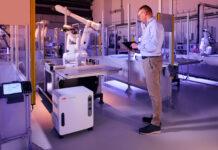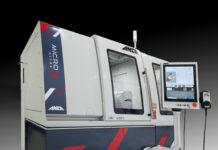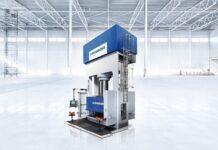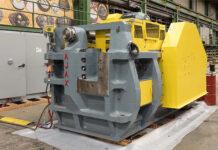
In the realm of manufacturing and design, the quest for precision, versatility, and eco-friendliness leads us to a standout technology: waterjet cutting. This cutting-edge method uses a high-velocity stream of water, sometimes mixed with abrasive particles, to cut through a myriad of materials. Unlike its thermal counterparts, waterjet cutting does not introduce heat, making it a unique choice for a wide range of applications.
Waterjet cutting is akin to carving with liquid precision. It operates on a simple principle: directing a high-pressure stream of water, often combined with an abrasive substance, through a narrow nozzle to cut material with unmatched accuracy. This technique stands out for its ability to cut without the heat-affected zones, preserving the integrity of the material being cut.
How Does Waterjet Cutting Work?
Understanding the waterjet cutting process illuminates why it’s favored for diverse applications. The journey from raw material to finished product involves several stages:
- Preparing the material: Positioning and securing the material to ensure precision cutting.
- Generating the high-pressure water stream: Water is pressurized to an intensity that can slice through materials.
- Mixing abrasive materials (when necessary): For harder materials, an abrasive substance is added to the water stream to enhance cutting power.
- Cutting the material: The high-velocity water or abrasive mixture makes its precise cut according to the design.
- Post-processing steps: Includes washing and finishing the cut edges as required.
What Are the Key Advantages of Waterjet Cutting?
The benefits of waterjet cutting are manifold, making it a preferred choice in various industries:
- Precision and versatility: It can create intricate designs and patterns on a wide range of materials.
- Cold cutting process and no heat-affected zones: This ensures the material’s properties remain unaltered.
- Ability to cut a wide range of materials: From metals to composites and beyond, waterjet can handle it all.
- Minimal material wastage: The precision cutting translates to more efficient material use and less waste.
Can Waterjet Cutting Handle Complex Cuts and Shapes?
Yes, waterjet cutting excels in producing complex geometries that other methods might struggle with. This adaptability stems from its precision and the ability to cut without introducing heat or mechanical stress, preserving the material’s original characteristics.
Why Is Waterjet Cutting Considered Environmentally Friendly?
The green credentials of waterjet cutting are significant:
- Water recyclability: The water used can often be recycled and reused.
- Absence of hazardous waste: Unlike some cutting processes, waterjet cutting does not produce harmful by-products.
- Reduced material wastage: Efficient use of materials means less waste.
What Types of Materials Can Be Cut With a Waterjet?
Waterjet cutting’s versatility is showcased in its ability to handle diverse materials:
- Metals: Including Stainless Steel, Aluminum, Brass, and more.
- Composites: Such as carbon fiber and fiberglass.
- Glass and ceramics: For intricate designs and shapes.
- Stone and tiles: Ideal for custom architectural elements.
- Plastics and polymers: Offering clean cuts without melting.
- Rubber and foam: For precise shapes and sizes.
Are There Limitations to the Thickness of Materials Waterjet Can Cut?
While waterjet cutting is remarkably versatile, the thickness it can handle varies by material type. Generally, it can cut up to several inches thick, but this capacity can be material-dependent.
 Which Industries Prefer Waterjet Cutting and Why?
Which Industries Prefer Waterjet Cutting and Why?
The adoption of waterjet cutting spans numerous sectors, each valuing its specific advantages:
- Aerospace and Aviation: For precision parts that require tight tolerances.
- Automotive: For cutting complex parts efficiently.
- Manufacturing and Fabrication: For its versatility in materials and shapes.
- Electronics: For delicate components that must avoid heat damage.
- Art and Architecture: For creating intricate designs in a variety of materials.
- Energy Sector: For cutting components used in harsh environments.
How Does Waterjet Cutting Benefit the Aerospace Industry?
In aerospace, the precision and ability to cut high-strength materials without compromising their integrity are crucial. Waterjet cutting meets these requirements, making it invaluable for creating parts with tight tolerances and complex shapes.
Why Is Waterjet Cutting Ideal for Manufacturing and Fabrication?
Its versatility and precision make waterjet cutting a go-to for manufacturers seeking to reduce material waste, ensure part accuracy, and maintain the integrity of the materials they use.
 Comparing Waterjet to Other Cutting Technologies
Comparing Waterjet to Other Cutting Technologies
When pitted against other cutting technologies like laser, plasma, and mechanical cutting, waterjet stands out for its versatility, precision, and material-friendly process.
Waterjet vs. Laser Cutting: Which Is More Versatile?
While laser cutting is precise and fast, it introduces heat, limiting its use with certain materials. Waterjet, with its cold-cutting advantage, can handle a broader spectrum of materials without heat damage.
Waterjet vs. Plasma Cutting: Why Choose Waterjet for Precision?
Plasma cutting is suited for metal and is faster for thick materials. However, waterjet offers superior precision, especially for complex shapes or materials where heat damage is a concern.
Key Considerations When Choosing Waterjet Cutting
Selecting waterjet cutting involves evaluating several factors:
- Material type and thickness: Assessing the compatibility and optimal cutting method.
- Cutting precision and quality requirements: Ensuring the method meets the project’s precision needs.
- Project budget and operational costs: Balancing cost-effectiveness with quality. Water jet cutting systems can have lower costs and save money with optimal waterjet software.
- Environmental and safety considerations: Prioritizing eco-friendly and safe processes.
How to Optimize Designs for Waterjet Cutting
Design optimization for waterjet involves several strategies:
- Minimizing material use with nesting techniques: Efficient layout reduces waste.
- Designing for cutting efficiency: Simplifying designs where possible to reduce cutting time and costs.
- Avoiding certain geometries that increase cutting time and costs: Streamlining designs for optimal cutting efficiency.
Safety Precautions in Waterjet Cutting Operations
Ensuring safety during waterjet operations is paramount:
- Personal protective equipment (PPE) requirements: Protecting operators from potential hazards.
- Handling high-pressure equipment: Ensuring safe operation and maintenance.
- Safe material handling practices: Avoiding injury during material loading and unloading.
 Cost Considerations in Waterjet Cutting
Cost Considerations in Waterjet Cutting
The cost of waterjet cutter is influenced by several factors:
- Material type and thickness: Different materials and thicknesses can affect operational costs.
- Complexity of the design: More complex designs may require more time and resources.
- Quantity and size of the parts: Larger or more numerous parts may increase costs.
How to Estimate the Cost of a Waterjet Cutting Project?
Project cost estimation involves considering material costs, operational expenses, and the time required for cutting. Accurate estimations ensure projects stay within budget while achieving desired outcomes.
Future Trends in Waterjet Cutting Technology
Innovations in waterjet technology continue to enhance its capabilities, with automation and artificial intelligence playing increasing roles in optimizing cutting processes and efficiency.
Conclusion
The preference for waterjet cutting in various industries is clear. Its unparalleled precision, versatility, and eco-friendly nature make it an indispensable technology in modern manufacturing and design. As we look to the future, waterjet cutting’s role is poised to expand, driven by ongoing innovations and its ability to meet the evolving needs of industries worldwide.


















